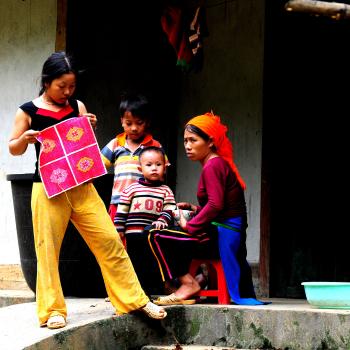
The World Hethe life-course, recognising that much of the burden of non-communicable disease results from the cumulative impact of factors experienced earlier in life. Reducing the burden of ill-hesocial determinants of he.
Policy debates have increasingly engaged with the potential of life-course analysis to improve childrenâs outcomes, and while most of the attention (key foundational stage, it highlights the importance of those critical moments in childrenâs lives which must not be missed. Increasingly attention is being drawn to changes and transitions happening during adolescence.
What then does a life-course approach offer to concerns about reducing the impact of child poverty?
The first point is to recognise that part of the solution to child poverty lies in ensuring wider development is more inclusive (including economic and social protection policies). The World Bank, after all, shows that half of those people counted as extremely poor are aged 18 or below. Households with children have higher needs and may have lower economic capacities.
Second, the fact that childhood is a particularly sensitive phase of human development ought to intensify concern about the incidence of poverty in childhood. Circumstances experienced in childhood have long-term implications. Life-course analysis gives a tool for considering the processes by which circumstances in childhood affect transitions towards adulthood.
Last week we presented some early thinking about what we can learn from life-course analysis to a meeting at UNICEF. This is a work in progress but meantime there are three headlines;
- Children's lives are lived multi-dimensionally, even if policy is delivered sectorally. education in Vietnam).
Finally, for policy the question is not only the changes going on in children's lives, but matching those to the scope of policy and programming. Understanding (better) what matters and when for children's development is an important step towards this. One way to think about this is to address the systematic differences in children;s access to services. Another is to lobby for social protection instruments to cover children (starting with young children), and another is to think about how policy supports children at, and through, key 'gateway' points in their lives. Practical examples from Young Lives show that doing badly in school tests is a risk factor for children leaving school early - so effective school interventions to support learning may be of particular benefit to poorer children. Similarly the move from primary to secondary school is often associated with longer, and potentially less safe travel to school. Addressing those safety concerns is an important strategy to help girls particularly continue to attend.
So what does a life-course perspective add?
First, children are particularly likely to be poor (their households have lower economic capacity relative to need) and second, identifying effective points in childrenâs lives for intervention is an important way to narrow gaps. Cross-sectional data scales social problems like stunting or poor test score performance; life-course perspectives contribute by helping to unpick the causes and changes as experienced by individuals. As such they offer up a tool to target more effective policy.

The World Hethe life-course, recognising that much of the burden of non-communicable disease results from the cumulative impact of factors experienced earlier in life. Reducing the burden of ill-hesocial determinants of he.
Policy debates have increasingly engaged with the potential of life-course analysis to improve childrenâs outcomes, and while most of the attention (key foundational stage, it highlights the importance of those critical moments in childrenâs lives which must not be missed. Increasingly attention is being drawn to changes and transitions happening during adolescence.
What then does a life-course approach offer to concerns about reducing the impact of child poverty?
The first point is to recognise that part of the solution to child poverty lies in ensuring wider development is more inclusive (including economic and social protection policies). The World Bank, after all, shows that half of those people counted as extremely poor are aged 18 or below. Households with children have higher needs and may have lower economic capacities.
Second, the fact that childhood is a particularly sensitive phase of human development ought to intensify concern about the incidence of poverty in childhood. Circumstances experienced in childhood have long-term implications. Life-course analysis gives a tool for considering the processes by which circumstances in childhood affect transitions towards adulthood.
Last week we presented some early thinking about what we can learn from life-course analysis to a meeting at UNICEF. This is a work in progress but meantime there are three headlines;
- Children's lives are lived multi-dimensionally, even if policy is delivered sectorally. education in Vietnam).
Finally, for policy the question is not only the changes going on in children's lives, but matching those to the scope of policy and programming. Understanding (better) what matters and when for children's development is an important step towards this. One way to think about this is to address the systematic differences in children;s access to services. Another is to lobby for social protection instruments to cover children (starting with young children), and another is to think about how policy supports children at, and through, key 'gateway' points in their lives. Practical examples from Young Lives show that doing badly in school tests is a risk factor for children leaving school early - so effective school interventions to support learning may be of particular benefit to poorer children. Similarly the move from primary to secondary school is often associated with longer, and potentially less safe travel to school. Addressing those safety concerns is an important strategy to help girls particularly continue to attend.
So what does a life-course perspective add?
First, children are particularly likely to be poor (their households have lower economic capacity relative to need) and second, identifying effective points in childrenâs lives for intervention is an important way to narrow gaps. Cross-sectional data scales social problems like stunting or poor test score performance; life-course perspectives contribute by helping to unpick the causes and changes as experienced by individuals. As such they offer up a tool to target more effective policy.

